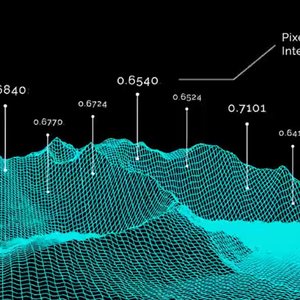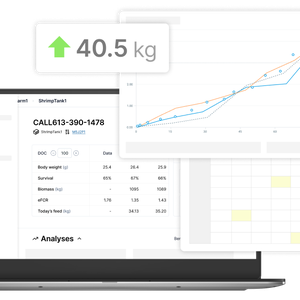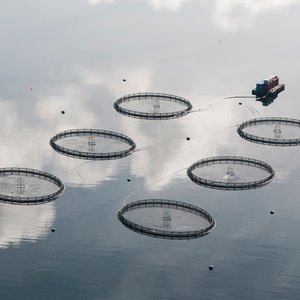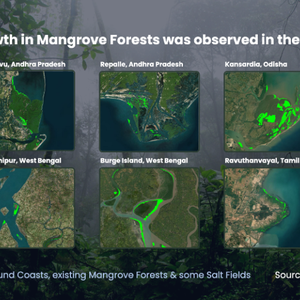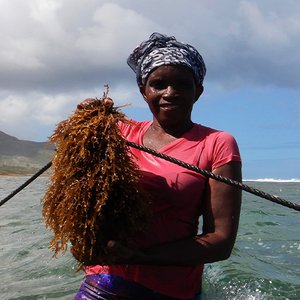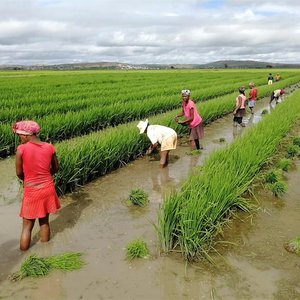The World Ocean Network (WON) Concrete Field Action Committee is launching a new international campaign – Sensible Fish Campaign - to be presented at the IAC and launched on June 8, 2005/ World Ocean Day, for 2 years.
WON is in the first phase of the campaign agenda: the identification of the committee members and definition of the program. WON is inviting stakeholders to support the campaign and to propose some basic principles from which network members can take inspiration in order to adapt the campaign messages and tools to their local situations.
"We are actively pursuing a large consultation through e-mail in order to prepare the presentation at the IAC, and in order to achieve a successful implementation", Chairman Leonard Sonnenschein told Aquafeed.com. "We are paying attention to the patterns of the committee, including representatives from the different fields of activities: fishermen, seafood industries, NGO, consumers, government".
For more information and how to get involved, please contact Dr. Miriam Pierro-Ross:
* * * * *
Draft of the Campaign and Committee Members:
Sensible Fish Campaign: affecting a better consumptive practice on a regional basis.
Vision Statement
To create a wider awareness of the fragile state of the ocean ecosystems and what consumer actions can do to bring about a positive conservation change.
Goal and Objectives of Sensible Fishery Products Campaign:
Objectives – the objective of the Sensible Fish Campaign is to educate consumers on the issue of overfishing and empower them with actions they can take in the market place and/or restaurant.
Goals:
q Protection of the Marine / Freshwater Environment
q To improve the entire Chain of Custody
q To encourage and empower consumers to be able to make sustainable choices when buying seafood.
Targets for campaign:
q Consumers and Youths
q Fishermen Organizations
q Fish Suppliers/ Processors
q Food Sellers, including restaurants, food service and retailers
q Public Aquariums and Zoos
q Conservation Organizations
q Museums and Science Centers
q Farmers, industry and local government that impact on water quality in coastal areas
q Government – particularly local and national fishery regulators
What is Sensible?
Eat fish from well-managed fisheries and fish farms They would ensure the following:
q Juvenile fish are not caught nor is fishing carried out during spawning periods
q threatened or vulnerable fish species are not targeted
q Promote consumption patterns and land management practices that maintain healthy ecosystems (need to acknowledge that land management practices also affect the health of marine & coastal ecosystems and fish production)
q Promote better fish handling and processing to improve quality of fish sold and reduce waste
q Promote suitable preparation and cooking methods to encourage the consumption of fish species that may be available but not until now preferred by consumers. (fish products generally are much more difficult to cook and prepare than meat hence some fish species are preferred over others due primarily to the ease of preparation. Cooking and preparation methods and recipes to be promoted by retailers to move consumers to more readily available but less well know or less favoured fish species)
Current Situation
q Public Aquariums have Formal and Informal Programs,
q NGOs have Sustainable Fishery Campaigns (wallet cards etc), Fisheries Certification /eco-labelling programs etc.
q Safe Eating Guidelines and Health Advisory:
q FDA Mercury in Fish Advisory
q Statewide warning on specific contaminant:
- PCBs (polyclorinatedbiphenyls)
- Mercury
q Genetic Engineer Fish
q Increasing demand for fish due to concerns on quality and nutritional value of meat.
Prerequisites for Successful Adoption
Determining our key audiences and developing strategies tailored to these audiences.
How can we improve? We will have a successful adoption if we keep in mind very simple concepts like: Easy “concepts campaign” and message;
Compatibility with local issues like health advisories, environmental need preservation but also culturally compatible.
Observability: monitoring the effectiveness of the campaign
Relative advantage: for the entire chain of custody
Effectiveness?
How effective do we need to be? Do we need to modify the purchasing habits of every seafood consumer, or just enough so that we maintain an undercurrent of concern with the “early adopters” (usually the demographic of people who attend zoos and aquariums) to put pressure on the seafood chain of custody.
Are we effective in reaching the public with our messages?
Are they to many? Or to few?
Do they really reach the desired targets?
Are they comprehensive?
Or Just Confusing?
Recommendation
q Eco-friendly advisories linked to Statewide Contamination Advisories
q Promotion of benefits of eating fish safely
q Fish Sensible consumption yields ecological benefits
q Where to get more information – aquaria, weblinks etc.
q Distribution of Wallet Cards in Fish Markets and Supermarkets
q Telling consumers to look for the MSC blue fish-tick logo, or other Certification Agencies logos, when buying seafood and ask their retailer for it to help create awareness of the issue within supermarkets.
q Partnerships with fishing industry, processors and retailers.
Testimonials
We think that the active involvement of more “friendly” social partners, like for example Chefs for the Seafood campaigns, may be more effective than the “Scientist” or “Activist” approach. I.e. campaign will make use of advocates who are well known and liked by the consumer. Perhaps celebrities with a connection to the ocean could be used by organizations which are relevant and recognized by consumers in their area?
And last, the consumers themselves may become a testimonial for a successful public awareness campaign, communicating and disseminating the desired message and making sustainable seafood choices in their everyday purchases.
Expected Outcomes
q We expect that every fish consumed in a sensible way will affect the environment from which it came, beneficially.
q We hope to educate consumers about the issue of overfishing and ask them to encourage their local retailers, producers to source seafood from sustainable fisheries (as identified through wallet cards and certification programs)
q We hope that producers and consumers will become economic partners as well as conservation minded, and that any campaign will become effective regardless of socio-economic barriers, since it is based upon common worldwide consumption patterns on a localized basis rather than centering its philosophy specifically to one lookout.
Agenda:
Committee Members Selection
Topic Campaign Selection
Concrete Action Timeframe
Mid-Campaign follow up
Ending and evaluation camping
Evaluation results.
Concrete Action Timeframe
Year 2005/2006
Critical time path points:
1. now thru October 8th member additions
2. By October 22th , redraft of final campaign agenda
3. Agreement to campaign outline, acceptance of individual actions by world region, and begin drafting logos, cards, etc. by October 30
4. Consideration of Campaign actions by October 30: choosing media format.
6. Campaign finalized including PowerPoint presentation by November 30
7. Presentation of campaign to International Aquarium Congress week of December 8
Mid-Campaign follow up
Questionnaire.
Newsletter updating partners
Campaign ending and evaluation
Questionnaire.
Evaluation
Recommandations.
Evaluation results
Newsletter.
Press Release.
Current committee members
q Leonard Sonnenschein, World
q Silvana Bujan, RENACE ,
q Manuel Cira,
q Alexia Cummins, MSC Marine Stewardship
q Jennifer Dianto,
q Antonio Di Natale,
q Dr. Ernesto Godelman,
q Dr. Muhammad Hayat, Assistant Ministry of Food, Agriculture and
q Martin Jones,
q Ted Loveday, Managing Director of Seafood Services
q Dr. Andre;-Serzh Mikuiza, International Ocean Institute
q Dr. Miriam Pierro-Ross, World
q Philippe Vallette,



